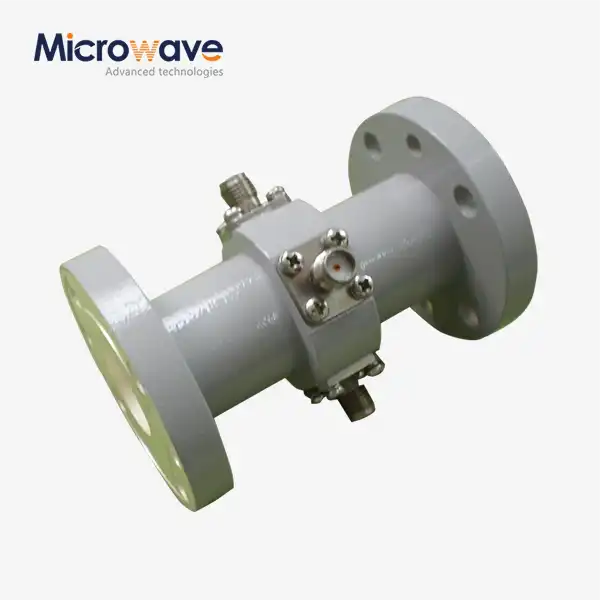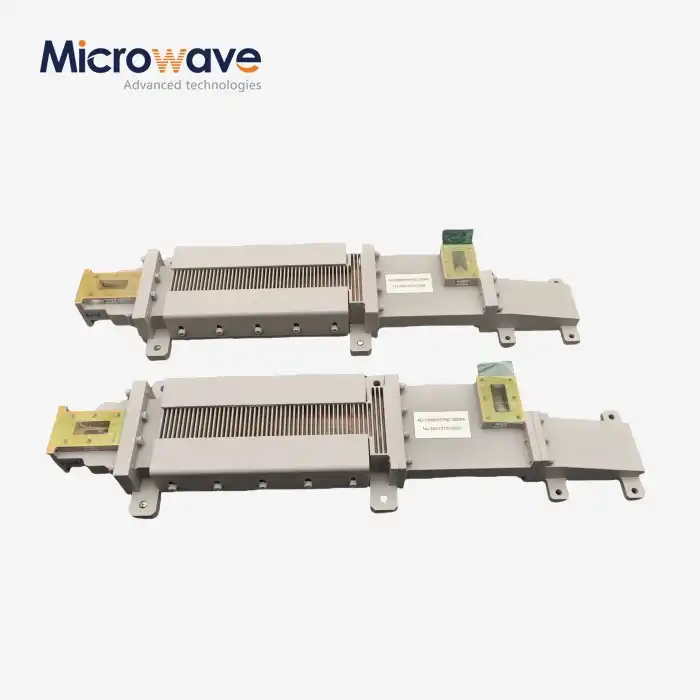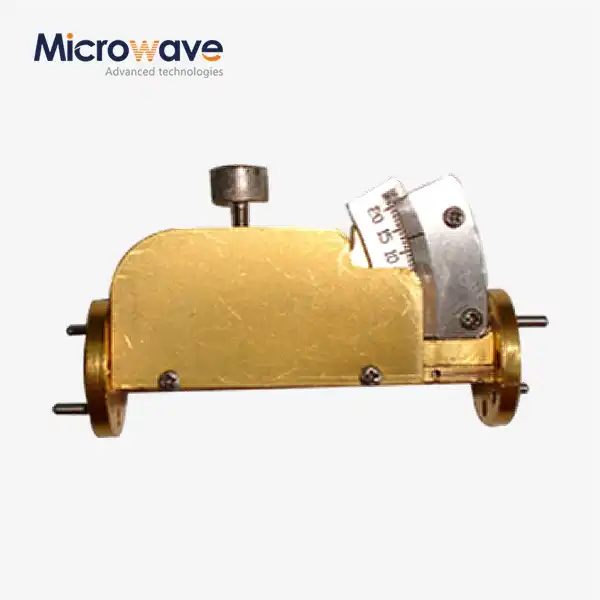What Materials Make Ideal Waveguide Gaskets?
Signal leakage at waveguide flanges can instantly compromise your entire microwave system. One improperly selected Waveguide Anti-leak Gasket material can cause insertion loss spikes, electromagnetic interference breaches, and catastrophic system failures in satellite communications or radar applications. The right material selection directly impacts signal integrity, operational reliability, and system longevity across extreme environmental conditions. Understanding which materials deliver optimal conductivity, elasticity, and environmental resistance ensures your waveguide systems maintain peak performance where precision matters most.
Understanding Critical Material Properties for Waveguide Anti-leak Gaskets
The foundation of effective Waveguide Anti-leak Gasket performance lies in three interdependent material characteristics that must work harmoniously together. These properties determine whether your gasket will successfully prevent electromagnetic wave leakage while maintaining mechanical integrity under operational stresses. Material selection becomes particularly critical when systems operate across wide frequency ranges or face harsh environmental conditions where inferior materials rapidly degrade and compromise system reliability.

Electrical Conductivity Requirements
Surface resistivity represents the most fundamental parameter for Waveguide Anti-leak Gasket effectiveness. High-performance applications demand materials maintaining surface resistivity below 5 milliohms per centimeter to ensure seamless electrical continuity across flange interfaces. This low resistance prevents signal reflections and minimizes insertion loss at critical junction points. Military-grade implementations incorporate silver-coated copper particles embedded within elastomer matrices, achieving optimal conductivity while retaining necessary flexibility. The conductive particle distribution must reach volume ratios exceeding 65 percent to guarantee consistent electrical pathways throughout the gasket structure, preventing discontinuities that generate signal degradation. Advanced conductive elastomer composites blend metallic fillers with polymer bases to achieve superior electromagnetic shielding effectiveness. Silver-plated copper particles, typically sized at 50 micrometers diameter, provide excellent conductivity without sacrificing the mechanical properties essential for proper sealing. These engineered materials maintain stable electrical characteristics across temperature fluctuations spanning from negative 55 degrees Celsius to positive 125 degrees Celsius, ensuring reliable performance throughout demanding operational cycles. The Waveguide Anti-leak Gasket material must establish intimate contact with both flange surfaces, creating continuous conductive paths that channel electromagnetic energy exclusively within the waveguide structure.
Mechanical Elasticity and Compression Characteristics
Proper compression behavior distinguishes premium Waveguide Anti-leak Gasket materials from inadequate alternatives. Materials must compress sufficiently to conform to flange surface irregularities while resisting excessive deformation that could alter waveguide dimensions and shift cutoff frequencies. Industrial standards specify compression deformation controlled within 12 percent plus or minus 3 percent under continuous 24-hour loading conditions. Excessive softness proves counterproductive, particularly in terahertz frequency applications where even 0.1 millimeter deformation can shift the transverse electric mode cutoff frequency by several gigahertz, fundamentally disrupting signal propagation. Fluororubber matrices combined with conductive fillers deliver the ideal balance between sealing flexibility and dimensional stability. These composite materials resist compression set degradation, maintaining their elastic recovery properties through repeated thermal cycling and mechanical stress. The gasket must generate sufficient contact pressure to create reliable electrical bonds without requiring excessive bolt torque that risks flange distortion or hardware failure. Quality Waveguide Anti-leak Gasket materials exhibit consistent spring-back characteristics, ensuring continued sealing effectiveness even as systems undergo operational vibration, shock loading, and thermal expansion cycles common in aerospace and defense deployments.
Premium Material Compositions for High-Performance Applications
Modern waveguide systems demand sophisticated material engineering that addresses multiple performance requirements simultaneously. The most effective Waveguide Anti-leak Gasket solutions employ advanced composite formulations specifically designed for microwave and millimeter-wave frequency applications. These materials must deliver exceptional electromagnetic performance while surviving extreme environmental exposures that would rapidly degrade conventional sealing materials.
Conductive Elastomer Composites
Fluororubber-based conductive elastomers represent the gold standard for demanding Waveguide Anti-leak Gasket applications. These materials combine the chemical resistance and thermal stability of fluoropolymers with the conductivity of precisely distributed metallic fillers. Silver-coated copper particles suspended within the elastomer matrix provide outstanding electrical performance while the fluoropolymer base resists degradation from environmental factors including ultraviolet radiation, oxidation, and chemical exposure. This material architecture delivers reliable operation throughout temperature ranges from arctic cold to desert heat, maintaining both conductivity and sealing effectiveness across 180-degree temperature spans. The manufacturing process for these advanced composites requires meticulous control over particle distribution and polymer curing parameters. Uniform dispersion of conductive fillers throughout the elastomer ensures consistent electrical properties across the entire gasket surface, eliminating weak points that could compromise shielding effectiveness. The Waveguide Anti-leak Gasket material must also exhibit minimal outgassing characteristics for space and vacuum applications, preventing contamination of sensitive optical systems or degradation of neighboring components. Quality control procedures verify each production batch meets stringent electrical, mechanical, and environmental specifications before materials reach critical applications.
Metal-Based Gasket Solutions
Certain extreme-performance scenarios require metal-based Waveguide Anti-leak Gasket materials that sacrifice some mechanical flexibility for ultimate electrical conductivity and environmental resistance. Copper gaskets provide excellent conductivity and prove particularly effective in ultra-high vacuum environments where organic materials cannot meet stringent outgassing requirements. Indium materials offer unique advantages through their exceptional malleability, allowing knife-edge flange designs to achieve contact pressures exceeding 20,000 pounds per square inch while creating hermetic seals that reduce helium leak rates to parts per billion levels. Silver-plated aluminum gaskets deliver outstanding performance in high-power applications where thermal management becomes critical. The aluminum core provides excellent heat transfer capabilities while the silver plating ensures superior electrical conductivity and oxidation resistance. These metal Waveguide Anti-leak Gasket solutions excel in satellite ground stations and radar systems where power handling requirements exceed the capabilities of elastomer-based alternatives. However, metal gaskets generally require more precise flange preparation and installation procedures compared to elastomeric options, demanding careful attention to surface finish specifications and torque sequences during assembly.
Surface Finish and Contact Interface Optimization
Material selection alone cannot guarantee Waveguide Anti-leak Gasket success without proper attention to surface preparation and contact interface engineering. The electromagnetic skin depth phenomenon demands exceptional surface quality, particularly at higher frequencies where signal penetration depths shrink to submicron dimensions. Effective gasket performance requires carefully matched surface characteristics between the gasket material and flange faces to achieve optimal electrical contact and mechanical sealing.
Microwave Frequency Surface Requirements
At millimeter-wave frequencies, electromagnetic energy propagates within an extremely shallow surface layer of conductive materials. In the Q and V bands spanning 33 to 75 gigahertz, skin depth decreases to approximately 0.2 micrometers, requiring flange surface roughness specifications below 0.4 micrometers average roughness. The Waveguide Anti-leak Gasket material must intimately conform to these precisely machined surfaces, establishing electrical contact at microscopic scales where surface imperfections can create significant impedance discontinuities and reflections. Computer numerical control machining processes achieve the necessary surface finish quality through carefully controlled feed rates of 0.01 millimeters per revolution or less. These precision manufacturing techniques produce flange surfaces with minimal tool marks and consistent surface topography that maximizes contact area with the gasket material. The Waveguide Anti-leak Gasket must compress sufficiently to fill microscopic surface valleys while the conductive particles in elastomer composites or the malleable nature of metal gaskets ensures electrical continuity across the interface. Systems operating above 94 gigahertz impose even more stringent requirements, demanding surface roughness controlled within one-fifth of the skin depth to prevent excessive insertion loss and maintain signal integrity.
Environmental Stability and Aging Resistance
Long-term Waveguide Anti-leak Gasket performance depends heavily on material resistance to environmental degradation mechanisms that progressively compromise both electrical and mechanical properties. Ultraviolet exposure, oxidation, thermal cycling, and mechanical stress all contribute to gradual material aging that eventually necessitates gasket replacement. Premium materials incorporate stabilizers and protective additives that dramatically extend service life in harsh operational environments, reducing maintenance requirements and improving system reliability. Thermal cycling represents one of the most destructive aging mechanisms affecting Waveguide Anti-leak Gasket materials. Fluororubber compounds demonstrate superior resistance to hardening and compression set development compared to conventional silicone or neoprene alternatives. Space-qualified materials undergo extensive thermal vacuum cycling tests to verify their ability to maintain sealing and shielding effectiveness through hundreds of temperature excursions. The coefficient of thermal expansion matching between gasket materials and waveguide components becomes critical, as mismatched expansion rates generate cyclic stresses that accelerate fatigue failure and create intermittent electrical discontinuities that manifest as insertion loss variations and increased voltage standing wave ratios.
Frequency-Specific Material Considerations for Waveguide Anti-leak Gaskets
Different frequency bands impose distinct material requirements that influence optimal Waveguide Anti-leak Gasket selection. Lower frequency systems operating below 10 gigahertz tolerate somewhat less stringent material specifications, while millimeter-wave applications demand premium materials with exceptional consistency and stability. Understanding these frequency-dependent considerations enables engineers to specify cost-effective solutions that deliver reliable performance without over-engineering for unnecessary specifications.

Lower Frequency Band Applications
S-band and C-band waveguide systems operating between 2 and 8 gigahertz offer more forgiving requirements for Waveguide Anti-leak Gasket materials. The relatively larger skin depth at these frequencies reduces surface finish sensitivity, allowing standard silicone-based conductive elastomers to deliver acceptable performance in many applications. Weather monitoring radar, shipboard communication systems, and ground-based navigation equipment commonly employ these frequency ranges where environmental durability and cost-effectiveness assume greater importance than absolute electromagnetic performance optimization. Standard conductive silicone gaskets with 70 durometer hardness provide adequate sealing and shielding for most lower-frequency waveguide connections. These Waveguide Anti-leak Gasket materials offer excellent environmental resistance, maintaining their properties through years of outdoor exposure to temperature extremes, moisture, and ultraviolet radiation. The lower conductivity requirements at these frequencies permit more economical filler materials and less critical manufacturing tolerances, significantly reducing component costs while still delivering reliable long-term performance in commercial and industrial applications.
Millimeter-Wave and High-Frequency Demands
As operating frequencies climb into Ka-band, V-band, and W-band spectrum allocations, Waveguide Anti-leak Gasket material requirements become significantly more stringent. Systems operating between 26 and 110 gigahertz demand premium conductive elastomers or metal gaskets that maintain exceptional electrical and dimensional stability. The reduced wavelengths at these frequencies magnify the impact of any impedance discontinuities or dimensional variations, making material quality and manufacturing precision absolutely critical for acceptable system performance. Advanced satellite communication earth stations, military electronic warfare systems, and automotive radar implementations operating at millimeter-wave frequencies require Waveguide Anti-leak Gasket materials specifically engineered for these demanding applications. Silver-coated copper filled fluororubber compounds with tightly controlled particle size distributions and precisely calibrated compression characteristics represent the minimum acceptable material quality. Surface preparations must achieve near-optical smoothness, while installation procedures demand meticulous attention to torque specifications and flange alignment to prevent microscopic gaps that would compromise electromagnetic containment at these frequencies.
Conclusion
Selecting appropriate materials for waveguide anti-leak gaskets requires balancing electrical conductivity, mechanical properties, and environmental resistance to ensure reliable system performance across demanding applications.
Cooperate with Advanced Microwave Technologies Co., Ltd.
Advanced Microwave Technologies Co., Ltd. stands as a trusted China Waveguide Anti-leak Gasket manufacturer, China Waveguide Anti-leak Gasket supplier, and China Waveguide Anti-leak Gasket factory offering High Quality Waveguide Anti-leak Gasket solutions with competitive Waveguide Anti-leak Gasket price structures. Our China Waveguide Anti-leak Gasket wholesale programs deliver ISO-certified, RoHS-compliant products backed by over 20 years of microwave expertise and testing capabilities extending to 110 GHz. Whether you need customized Waveguide Anti-leak Gasket for sale for satellite communications, aerospace, or defense applications, our experienced engineering team provides comprehensive OEM services including prototyping, technical consultation, and rapid delivery. Contact craig@admicrowave.com today to discuss your specific requirements and discover how our advanced manufacturing capabilities and strict quality control processes ensure your waveguide systems achieve optimal performance and reliability.
References
1. "MIL-DTL-83528: EMI Gaskets, Shielding, Conductive" - Defense Logistics Agency, Department of Defense Interface Standard
2. Johnson, R.C. & Jasik, H. - "Antenna Engineering Handbook" - McGraw-Hill Professional Engineering Series
3. Saad, T.S. - "Microwave Engineers' Handbook, Volume 1" - Artech House Microwave Library
4. Pozar, D.M. - "Microwave Engineering" - John Wiley & Sons Technical Publications












